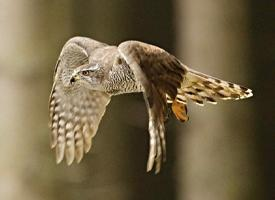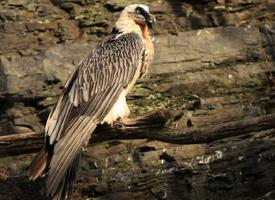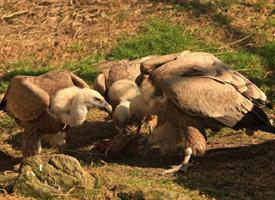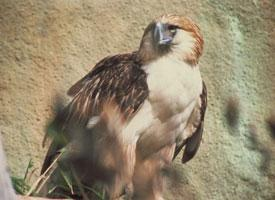
Váhy a míry
| Délka | 112 cm |
|---|---|
| Hmotnost | 7 kg |
Stav ohrožení
| Ohrožen |
Popis zvířete
The Philippine eagle, known scientifically as Pithecophaga jefferyi, stands as a majestic and powerful bird of prey, native to the Philippines. It is not only one of the largest eagles in the world but also holds a place of national significance as the national bird of the Philippines, symbolizing the country's struggle for independence and its rich biodiversity. This eagle, with its regal bearing and impressive size, commands respect and admiration from those who are fortunate enough to encounter it in the wild or learn of its existence.Characterized by its massive wingspan, which can reach over 2 meters (about 7 feet), the Philippine eagle is built for soaring high above the forest canopy. Its size is complemented by its striking appearance; the bird has a creamy-brown nape and crown, which contrasts beautifully with its dark face and a prominent crest of long, brown feathers that it can raise and lower at will. The eagle's back is dark brown, while the underparts are white, creating a dramatic visual contrast. Its large, powerful beak and talons are a vivid yellow, adding to its distinctive appearance. The eagle's piercing eyes are a deep blue-gray, exuding an intense and penetrating gaze.
The Philippine eagle primarily inhabits the rainforests of the Philippines, from the lowlands to mountains approximately 1,800 meters in elevation. It has a preference for primary forests but can also be found in disturbed areas with a scattering of large trees. The eagle's presence is most notable on the islands of Luzon, Samar, Leyte, and Mindanao, with Mindanao hosting the majority of the remaining population.
This eagle is an apex predator, sitting at the top of its food chain. Its diet is diverse, consisting mainly of medium-sized mammals, such as flying lemurs, palm civets, and monkeys, particularly the Philippine long-tailed macaque. It also hunts birds, snakes, and lizards. The Philippine eagle is known for its remarkable hunting technique, wherein it perches silently for long periods before swooping down on its prey with lethal precision.
Breeding pairs of Philippine eagles are monogamous and are known to mate for life. They engage in a lengthy breeding cycle, which can last up to two years, limiting their reproductive rate. The female typically lays a single egg, which both parents then incubate and care for. The chick is entirely dependent on its parents for food and protection for over a year, a period during which the parents are highly protective and can be aggressive toward perceived threats.
Unfortunately, the Philippine eagle is critically endangered, with estimates suggesting fewer than 400 breeding pairs remaining in the wild. The primary threats to its survival include deforestation due to logging, mining, and agricultural expansion, which destroy its natural habitat. Additionally, the eagle faces dangers from hunting and trapping, as well as secondary poisoning from consuming prey that have ingested pesticides and rodenticides.
Conservation efforts for the Philippine eagle are ongoing and include habitat protection, captive breeding programs, and education campaigns aimed at raising awareness of the eagle's plight. The Philippine Eagle Foundation, in particular, has been instrumental in these efforts, working tirelessly to ensure the survival of this magnificent bird for future generations.
In summary, the Philippine eagle is a symbol of natural heritage and ecological majesty. Its survival is intertwined with the health of the Philippine forests, making its conservation an urgent priority not only for the Philippines but for the global community. The preservation of this magnificent raptor is a testament to our ability to coexist with the incredible diversity of life on our planet.
Mapa výskytu
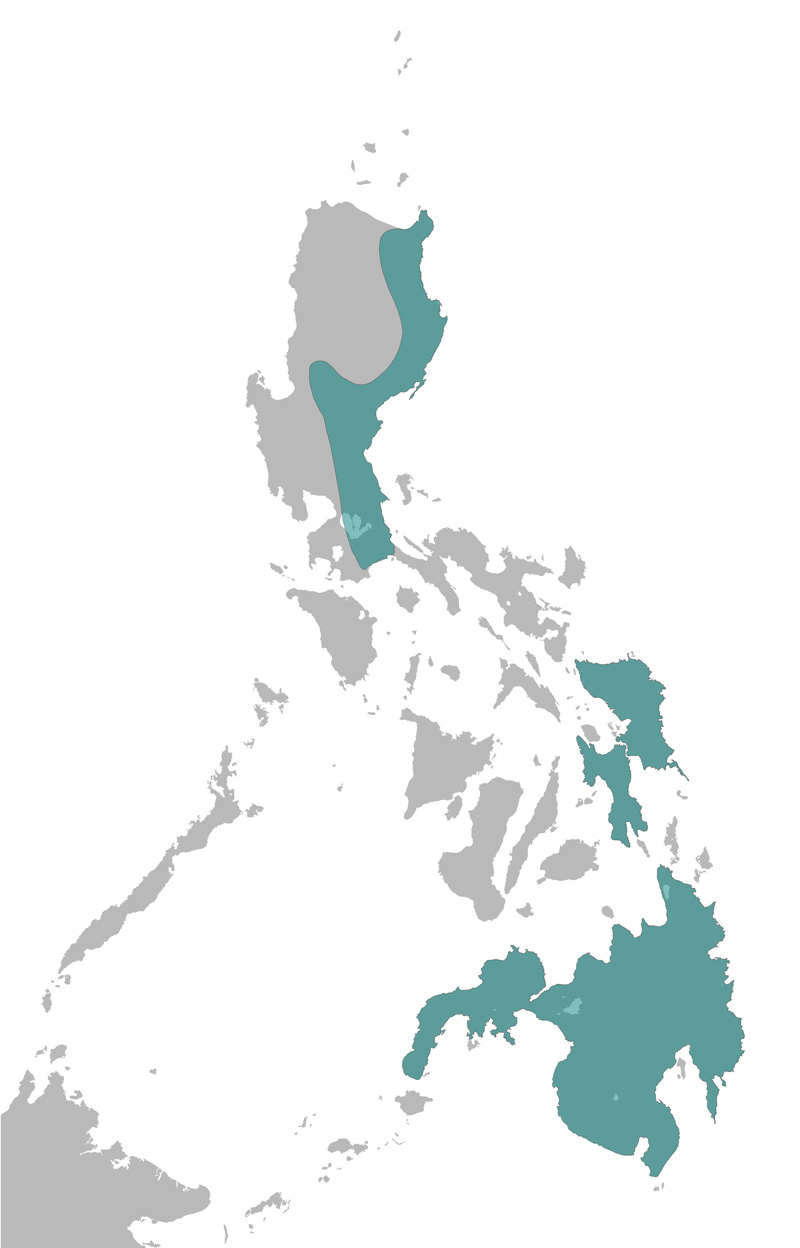
Podobná zvířata
Nové fotografie zvířat
Top 10 zvířat
- Chinese water dragon (Physignathus cocincinus)
- Galápagos tortoise (Geochelone nigra complex)
- Dolphin gull (Leucophaeus scoresbii)
- Japanese macaque (Macaca fuscata)
- Colombian red howler (Alouatta seniculus)
- Sea urchins (Echinoidea)
- Diana monkey (Cercopithecus diana)
- Moustached guenon (Cercopithecus cephus)
- Colossal squid (Mesonychoteuthis hamiltoni)
- Common house mosquito (Culex pipiens)
